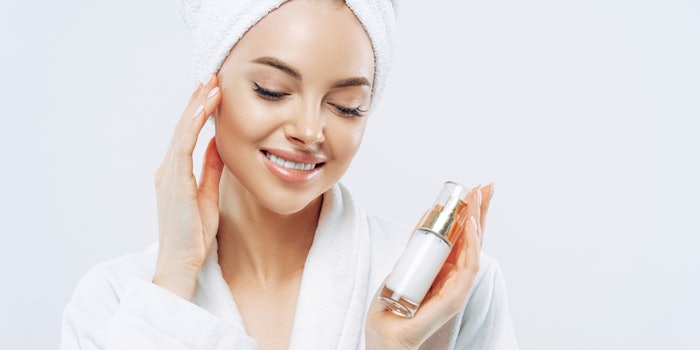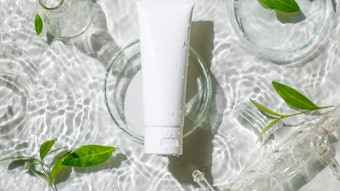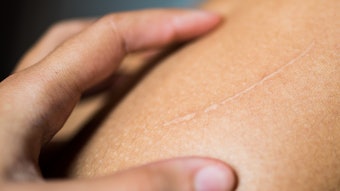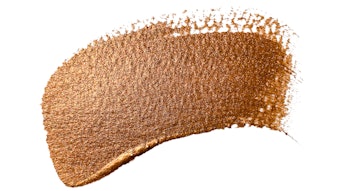
With the increase in popularity (and deeply penetrating efficacy) of hyaluronic acid, and the potent nature of retinol, questions have been raised as to what types of ingredients can be combined with retinol to ensure efficacy without causing adverse reactions in skin.
Featured: Safe and Strategic: Hyaluronic and Retinoic Acid Derivative Allays Aging and Acne
Humectants have become increasingly popular in recent years, especially in relation to hyaluronic acid and glycerin. Humectants are hygroscopic ingredients that facilitate hydration in the skin by controlling moisture loss and redistributing moisture within skin to the stratum corneum. This type of ingredient will often contain at least one hydrophilic group, such as hydroxyl, carboxyl and/or amine.
These hydrophilic groups form hydrogen bonding with water molecules readily found in the skin. This water is taken from the dermis and epidermis and pulled upwards toward the stratum corneum, filling in voids in the skin through swelling—hence, the plumping and soothing properties typical of humectants.1
Humectants can be found in a variety of dosage forms such as creams, lotions, serums and toners. While humectants are found to be in the skin conditioning agent category, they may not be ideal for those with dry skin when used alone.
Since humectants work by drawing moisture from deeper within skin toward the surface, if the skin is already lacking in water content, it may dry the skin out even more. Due to this, those who suffer from dry skin—or formulating for it—should combine humectants with occlusives and emollients.
That said, individuals who categorize themselves as having normal or oily skin will find humectants to be more effective. However, there are numerous ways to deliver this ingredient to the skin at various concentrations, depending on the specific ingredient. As previously mentioned, humectants have been found in many dosage forms but there have still been concerns about the use of humectants with the use of retinol; specifically hyaluronic acid.
Retinols have been popular among those who are concerned about hyperpigmentation, acne and photoaging. Retinols work by promoting cell turnover to reveal healthier-looking skin. This ingredient type functions by increasing desquamation (the shedding of the epidermis) and promoting keratinocyte differentiation. This allows for an increase in cell regeneration, which allows for “new” skin to rise.
Through this process, there is an increase in overall collagen production. Additionally, it helps to block certain inflammatory pathways that are found in acne.2 Retinoids are lipophilic molecules that can penetrate the epidermis and dermis, which may improve surface roughness, age spots and fine line reduction.
In the United States, retinol and retinoids are classified as drugs, thus they can be prescribed to consumers or purchased over-the-counter. Examples of retinoids dermatologists may prescribe include: retinoic acid, adapalene, tazarotene and bexarotene; over-the-counter products contain retinyl esters, retinol, retinaldehyde and oxiretinoids.
Due to the potent nature of retinol, concerns have been raised over which ingredients can be combined with retinol to ensure the efficacy of the product while not causing an adverse reaction in the skin. With the increased popularity of hyaluronic acid, in particular, some have questioned whether it is okay to combine these ingredients. Despite the concern from the public, hyaluronic acid and retinol are perfectly safe to combine.
Formulation Notes
Whether it is a cream, lotion or serum, hyaluronic acid has been found to be effective at around 0.05-0.50%. Glycerin can be used as high as 5-10% or as low as 1-4%. However, this may have an impact on the overall texture and after-feel of the formula. Proper testing should be carried out to ensure a formula does not cause adverse reactions and that the ingredients are efficacious in the formula at the chosen concentrations.
These ingredients are safe to combine with retinol. However, retinol with AHAs/BHAs is generally not recommended since these ingredients can dry the skin and increase irritation and sensitivity.
Related: [video] Penetrating Hyaluronic Acid: Insights and Efficacy
Generally speaking, hyaluronic acid is an ingredient that is temperature-sensitive. It is important to include this ingredient toward the end of an emulsion or through a cold process when the batch is at less than 40°C. This will ensure the ingredient does not burn in the formula at higher temperatures. Adding a temperature-sensitive ingredient at the wrong temperature may reduce the efficacy of the ingredient and cause potential stability issues. Glycerin, on the other hand, can be added to the water phase of an emulsion, heated to 80-85°C and still be effective; although heating it is not required to improve efficacy.
As noted, since hyaluronic acid and retinol can dry out the skin for some, it is highly recommended to incorporate emollients and occlusives into formulations to help mitigate dryness and skin sensitivities. Some ingredients that can be included are safflower oil, sweet almond oil, caprylic/capric triglyceride, shea butter and petrolatum.
Emollients will help soften and smooth the skin, allowing it to be more pliable. This is accomplished by filling the voids between corneocytes and replacing lost lipids in the stratum corneum.
Occlusives are great ingredients that essentially blanket on top of the skin to help slow the evaporation of water off the skin surface. This allows all of the moisture that gets drawn up from the humectants into the stratum corneum to stay. Occlusive agents are not as susceptible to humidity in the external environment.
Conclusion
Retinols and humectants, specifically hyaluronic acid and glycerin, can go hand-in-hand when formulated properly and efficaciously. Using hyaluronic acid, glycerin and retinol in a formulation can impart a variety of skin benefits. Well-known examples include: anti-aging, reducing hyperpigmentation and anti-acne, smoothing skin and increasing water retention. Importantly, claims such as these must be substantiated regardless of an ingredient's known efficacy to ensure they are validated.
Previously: Suki Skincare Restores Skin Moisture with Hyaluronic Acid Milk Serum
References
- Baki, G. and Alexander, K.S. (2015, Mar). Introduction to cosmetic formulation and technology. Wiley. Available at: https://www.wiley.com/en-us/Introduction+to+Cosmetic+Formulation+and+Technology-p-9781118764893
- Leyden, J., Stein-Gold, L., and Weiss, J. (2017). Why topical retinoids are mainstay of therapy for acne. Dermatol Ther 7(3) 293-304. Available at: https://doi.org/10.1007/s13555-017-0185-2









